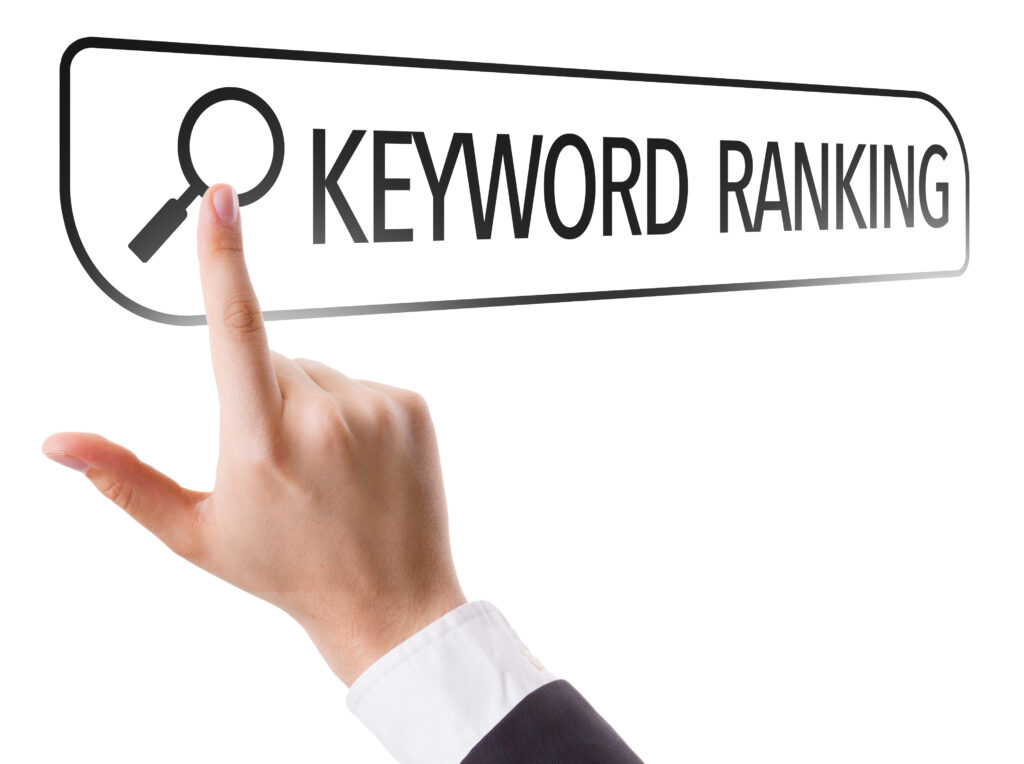There’s no question that an effective SEO campaign results in more website traffic, leads, and conversions. But how do you know if your SEO efforts are working? And more importantly, what steps do you need to take to ensure that your SEO campaigns are successful?
In this blog post, we’ll show you how to measure the success of your SEO campaigns and provide tips on how to improve your results. Let’s get started!
How to Measure SEO Campaign Success
One of the most important indicators of SEO success is website traffic. You can track your website traffic using Google Analytics or another web analytics tool. Look at your overall website traffic and traffic from specific channels, such as organic search traffic or paid search traffic. If you see an increase in overall traffic or traffic from your targeted channels, it’s a good sign that your SEO efforts are working.

Making sure that the SEO Campaign is on Track and Scores High!
Another key indicator of SEO success is leads and conversions. Again, you can track this using Google Analytics or another web analytics tool. Look at your overall lead and conversion rate and leads and conversions from specific channels, such as organic search or paid search. If you see an increase in overall leads and conversions or leads and conversions, it’s a good sign that your SEO efforts are working.
Finally, you can also measure the success of your SEO campaigns by looking at your rankings in search engines. Use a tool like Google Search Console or Moz’s Keyword Explorer to track your keywords and their rankings over time. If you see an increase in your rankings, it’s a good sign that your SEO efforts are working.
These are just a few of the ways you can measure the success of your SEO campaigns. By tracking these indicators, you can identify what’s working and what’s not and make changes to improve your results. And, if you do not see the results you want, don’t despair! SEO is a long-term marketing strategy, and it takes time to see results. But, if you’re patient and keep at it, you will see the rewards of your SEO efforts in the form of more website traffic, leads, and conversions.
At ePropel, we can help you from start to finish with your SEO campaign strategies, up to this part, where you will always get an update of your rankings. Call us now, and we will discuss the best SEO strategy for your business!
What Are SEO Performance Metrics, and How Should You Track Them?
SEO performance metrics are quantifiable measures that allow you to track and evaluate the success of your SEO efforts. The metrics you track will depend on your goals for your SEO campaign. For example, if your goal is to increase website traffic, you’ll want to track metrics like page views and unique visitors. If your goal is to increase leads and conversions, you’ll want to track metrics like contact form submissions and phone calls.
Whatever your goals may be, there are a few key SEO metrics that you should always track, including:

Keeping Track of SEO performance metrics like Keyword Ranking.
KEYWORD RANKINGS
Keyword rankings were a must-have SEO KPI (key performance indicators). You must look beyond your website’s ranking. What’s happening with organic rankings? Changes in trends and seasons? What relevant keywords have the highest CTR?
What does SEO rank mean?
Rank on search engine results pages (SERPs) is your SEO ranking. The relevancy of a page’s content, its authority, its on-page SEO, and its click-through rate all play a role in its ranking (CTR).
As a result, it’s critical to monitor your general website ranking as well as your keyword ranks for the specific terms you’re targeting.
How to Find Your Keyword Rankings?
You can track your keyword rankings using Google Analytics and Google Search Console. Keep an eye on your search visibility, average position, and traffic over time to identify any keywords that aren’t performing well. You can then take steps to improve your ranking for those keywords.

Learn the tips to improve Organic Traffic to your Website.
ORGANIC TRAFFIC
Organic traffic refers to the visitors who naturally come to your website without being directed there through an advertisement or other means. This type of traffic is the most valuable since it indicates that users are finding your site on their own accord and are thus more likely to be interested in what you have to offer. Simply sign in to Google Analytics, go to Audience > Overview and choose Add Segment to check organic traffic. There you will see organic traffic as a total percentage of traffic to your website.
How to Increase Organic Traffic
You can do a few things to increase your organic traffic from search engines. The main one is SEO (search engine optimization)- optimizing your website so that you rank higher on search engine results pages. This can be anything from choosing the right keywords to use on your website to making sure your website is easy to navigate and looks good to potential visitors. If you can make your website more appealing to search engines, you’ll likely see an increase in organic traffic. Another thing you can do is to make sure your website is mobile-friendly, as more and more people are using their phones and tablets to go online. If your website isn’t optimized for mobile, you could be missing out on a lot of potential traffic. Finally, you can use social media to promote your website and attract more visitors. If you have a strong social media presence, you’re more likely to get more organic traffic from people who are already familiar with your brand.
CLICK-THROUGH RATE
Click-through rate (CTR) is a metric that measures how often people click on a particular link or call to action. A high CTR indicates that people are interested in what you’re offering and are more likely to buy from you. Conversely, a low CTR could mean that your offer isn’t compelling enough or that people aren’t aware of it.

Learn more about ROI as an important metric to assess website performance.
Keep in mind that CTR is just one metric to consider when assessing the success of your marketing campaigns. Other factors, such as conversion rate and ROI, are also important.
What is a Good Click-Through Rate?
There is no definitive answer to this question since it varies depending on the industry and type of offer. Generally speaking, a 2% or higher CTR is considered good, while a 5% or higher CTR is considered excellent.
Why is Click-Through Rate Important?
The Click-through rate is important because it allows you to gauge the effectiveness of your marketing campaigns. If people are regularly clicking on your links and call-to-actions, it’s a good sign that they’re interested in what you have to offer. This metric can also help you identify areas for improvement, such as using stronger calls to action or more persuasive language.
Backlinks and Referring Domains
If you want to rank highly in Google searches and build up domain authority, it’s important to have high-quality and relevant backlinks. This means that it’s not enough to track the number of backlinks and the quality of those links. Fortunately, a few tools can help with this, such as Google Search Console, SEMrush, and Moz’s Link Explorer. Ahrefs is particularly useful as it allows you to check the URL rating distribution – the percentage of high-quality backlinks versus low-quality.
By monitoring the quality of your backlinks, you can ensure that your site is more likely to rank highly in search results.
Conversion Rates
Conversion rate is the percentage of visitors to a website who take the desired action. The goal could be anything, such as signing up for an email newsletter, downloading an e-book, making a purchase, or calling a phone number.
Knowing your conversion rate helps you understand your SEO efforts’ return on investment (ROI). In other words, it tells you how effective your SEO strategy is in terms of generating leads or sales.
Dwell Time
Dwell time is the amount of time that a user spends on a particular website or web page. It is used as a metric to measure the effectiveness of a website or web page in keeping users engaged. A high dwell time generally indicates that users find the site or page useful and are able to find what they are looking for easily. On the other hand, a low dwell time may indicate that users are having difficulty navigating the site or finding the information they need. Dwell time is also sometimes referred to as “time-on-site” or “session duration.”
How is Dwell time measured?
Dwell time is typically measured by SEO analytics tools such as Google Analytics. To measure dwell time, these tools track how long users spend on a particular site or page before moving on to another site or clicking away from the page. The dwell time for a website or web page is then calculated as an average of all the individual dwell times recorded.
Bounce Rate
Bounce rate is the percentage of visitors to a website who leave the site after viewing only one page. A high bounce rate indicates that people are leaving your site without taking any further action, such as clicking on links or filling out forms. This can be a sign that your content is not relevant to what they are looking for or that your site is difficult to navigate.
Bounce rate is an important metric to track because it can give you insights into the effectiveness of your website and its content. If you have a high bounce rate, it may indicate that you need to make some changes to your site to keep people engaged.
Pages per Visit
This is the average number of pages viewed during a visit to the site. A page view is recorded whenever a visitor requests any page within the website – a home page, product page, content page, etc. Repeated views of a single page are also counted as distinct page views.
It’s important to note that this metric counts all visits, whether they came from organic search, direct traffic, or referring sites. This makes it a good general indicator of the health of your website’s engagement metrics, although it doesn’t give you any insights into where those visitors are coming from.
Average Time on Page
The average time on a page is the amount of time that a user spends on a particular page on your site. This metric is important because it allows you to see user engagement with the content on your site. If users are spending a lot of time on a particular page, it means that they find the content engaging and are likely to come back for more. On the other hand, if users are only spending a few seconds on a page, it could mean that the content is not relevant to them or that they find it difficult to navigate.
Pages Indexed
The number of pages that a search engine has indexed.
The number of pages that a search engine has indexed can be used to measure the size of a website or the popularity of a website. The more pages that are indexed by a search engine, the more likely it is that people will find the website.
Search engines index websites by following links from other websites. The more links there are to a website, the more likely it is that the website will be indexed. The number of pages linked to other websites can also be used to measure the popularity of a website.
ROI
Here, you link everything to your business goals. SEO sales, conversions, and revenue? What’s changing? Where can we improve?
Google Analytics can show the number and value of conversions. What’s the revenue? Are SEO KPIs met? To calculate ROI, compare these figures with the amount spent on SEO during the same period.
You’ll get an excellent sense of how your SEO tactics affect business goals.

Learn more about ROI as an important metric to assess website performance.
SEO ROI varies from month to month. You’ll likely start with a negative ROI as you spend more on ads and website optimization. But that’s normal, given the SEO outcomes timeline. Your campaign won’t start growing until a few months in. Your ROI will be tremendous after 8-12 months.
Heads up: SEO performance metrics are important tools that allow you to track and evaluate the success of your SEO efforts. You can fine-tune your campaigns to achieve your desired results by tracking the right metrics. If you’re looking for help setting up or improving your SEO campaign, get in touch with ePropel. Our team of experts will work with you to develop a strategy that meets your unique needs and helps you achieve your business goals.
How often should you check your SEO key metrics?
Ideally, you should check your SEO metrics at least once a week to get a good idea of how your campaigns are performing. However, if you’re just getting started with SEO or if you’re making major changes to your campaigns, you may want to check your metrics more frequently.
What’s a good SEO metric?
There is no one-size-fits-all answer to this question, as the “goodness” of an SEO metric will depend on your goals for your campaign. However, some general guidelines for determining whether an SEO metric is good or not include:
1. Is the metric actionable? In other words, can you do something to improve the metric?
2. Is the metric relevant to your goals?
3. Is the metric easy to understand?
4. Does the metric provide valuable insights?
Remember to track various metrics, check your metrics regularly, and make sure that the metrics you’re tracking are relevant to your goals.
In a nutshell: As you can see, data is key to understanding your SEO progress and performance. Without it, you’re essentially flying blind and making decisions without any information to back them up. That’s why ePropel always recommends tracking your website’s analytics as part of our overall SEO services. This gives us a benchmark to measure progress against, but it also allows us (and you) to make informed decisions about the future of your website’s SEO. If you want help setting this up or need someone to analyze and report on your current data, get in touch with ePropel today. We would be more than happy to assist!